Aspirator flasks: they may look like ordinary laboratory glassware, but their unique design and versatility make them indispensable in various scientific fields. Ready to unlock the full potential of these unsung heroes? In this blog post, we’ll dive into the world of aspirator flasks, exploring their benefits, components, and applications, and how to choose the right one for your needs.
Key Takeaways for Aspirator Flask
- Aspirator flasks are commonly used filter flasks in laboratories, and 250 ml borosilicate glass is recommended for most applications.
- Borosilicate glass has a low coefficient of thermal expansion, resistance to temperature fluctuations & mechanical shock/vibration. Thicker walls provide insulation & durability.
- Proper usage & maintenance are essential for optimal performance. Widely used in multiple industries such as chemistry, biology and pharmaceutical research.
Understanding Aspirator Flask
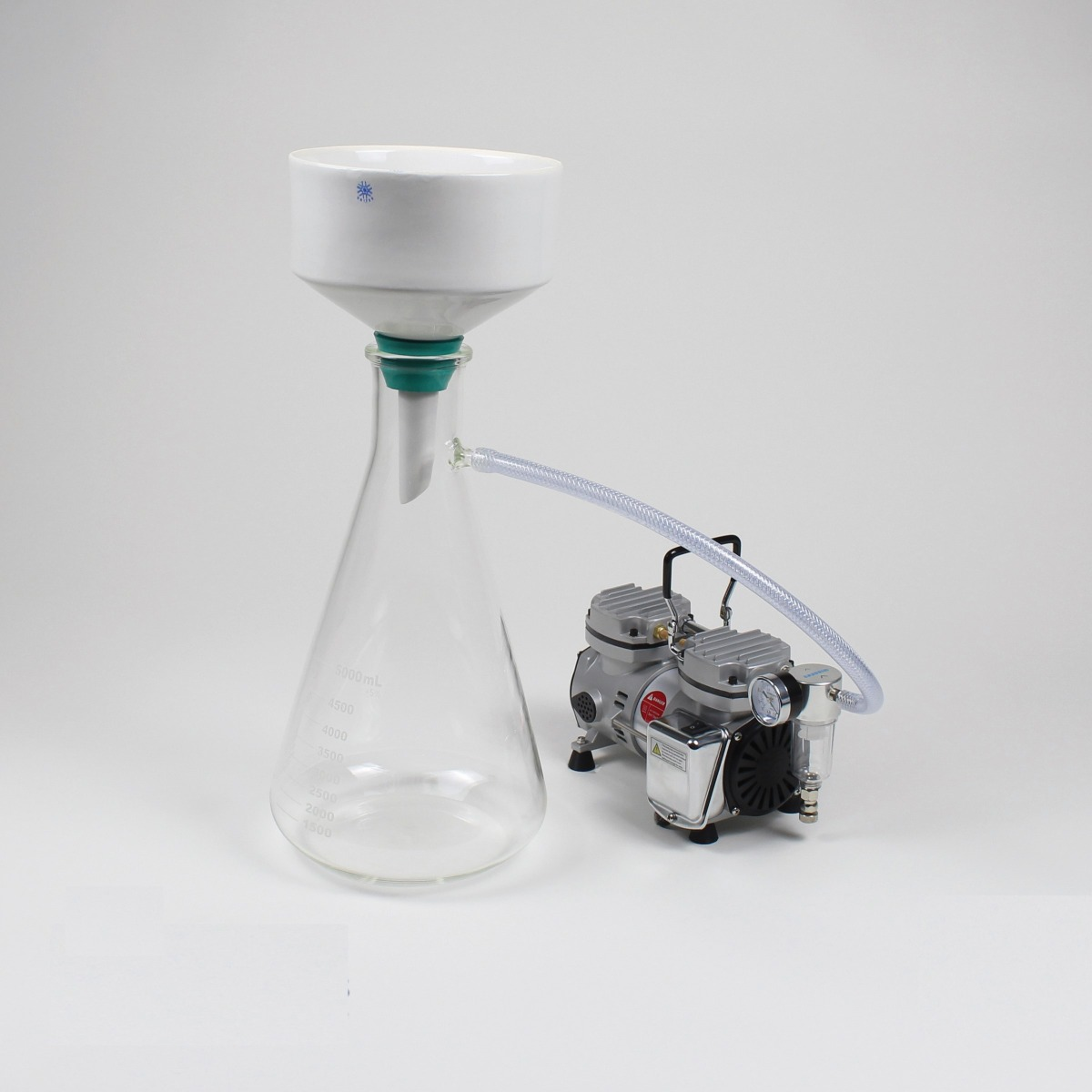
Aspirator flasks, also known as filtering flasks, are special vacuum filter flasks commonly used in laboratories for tasks like filtering solutions or eliminating residual quantities of alcohol or buffer from micro test tubes. Their design enables them to generate a vacuum suction, which facilitates liquid or particle extraction from containers. When these empty filter flasks are connected to a vacuum pump, they create a vacuum, which results in a differential pressure across the filter paper and allows for the separation of solid particles from liquids.
Vacuum flasks come in various sizes, but one of the most popular choices is the 250 ml borosilicate glass filter flask. It’s perfect for most laboratory chemistry applications, thanks to its strong, heat-resistant material capable of withstanding the pressure of a vacuum. For optimal usage and maintenance, the appropriate filter paper and filter membrane should be used, along with a vacuum trap and vacuum source.
Vacuum Filtration Basics
Vacuum filtration is all about creating a pressure differential across a filter medium to rapidly separate solids from liquids. This is typically achieved by:
- Connecting the flask to a vacuum line or vacuum pump, providing the necessary pressure differential.
- In a vacuum filtering flask, the vacuum applied to the lower flask creates a pressure difference across the filter paper.
- This causes the liquid to flow from the funnel, through the filter paper, and into the lower flask.
This method of filtration is widely used in laboratories for various purposes such as solid particle separation, blending, and temperature regulation. The crucial role of a side arm flask, also known as an aspirator flask, in vacuum filtration comes from its ability to create a vacuum and facilitate efficient filtration.
Components of an Aspirator Flask System
An aspirator system typically consists of several components, including:
- A vacuum flask
- An overflow flask
- A vacuum adapter lid
- Caps with gaskets
- A hydrophobic filter
- Barb fittings
The vacuum flask creates a vacuum, the overflow flask collects the liquid, the vacuum adapter lid connects the flask to the vacuum source, caps with gaskets seal the flask, the hydrophobic filter prevents liquid from entering the sealed vacuum source, and the barb fittings join the flask to the vacuum hose.
Effective and safe operation of a flask system hinges on proper usage and maintenance. This involves:
- Using the appropriate filter paper or filter membrane
- Selecting the suitable vacuum trap and vacuum source
- Regularly cleaning and inspecting the components
The Importance of Borosilicate Glass
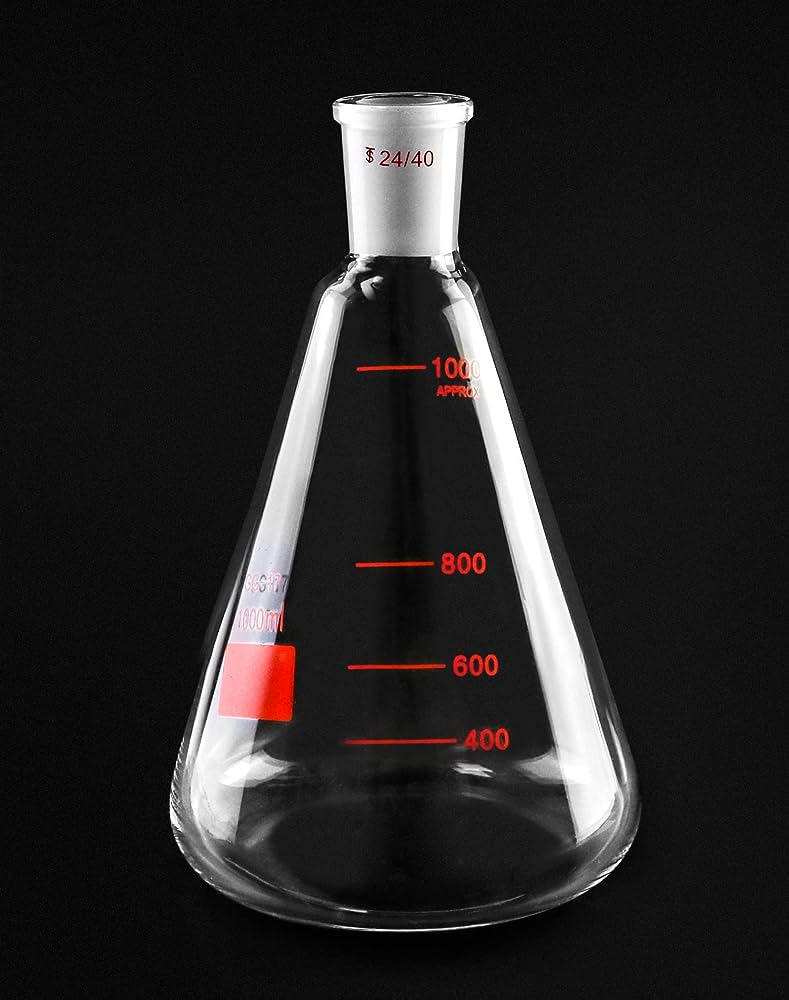
When it comes to these flasks, borosilicate glass is the material of choice. This type of glass offers several advantages:
- It contains boron trioxide, resulting in a low coefficient of thermal expansion, making it ideal for sidearm flasks used in vacuum filtration processes.
- It offers a high level of resistance to temperature fluctuations, thanks to its low coefficient of thermal expansion.
- It boasts remarkable resistance to mechanical shock and vibration, making it suitable for aspirator flasks.
Borosilicate glass also exhibits exceptional resistance to most acids and alkalis, making it compatible with a wide range of chemicals. All these properties make borosilicate glass the perfect choice for aspirator flasks, ensuring durability, performance, and safety in various laboratory applications.
Thick Walls and Heavier Construction
Thick walls and heavier construction in borosilicate glass flasks offer numerous advantages, such as:
- Insulation
- Soundproofing
- Durability
- Structural stability
- Increased privacy
The heavier construction of such flasks enhances their longevity and durability, ensuring they can withstand the rigors of laboratory use.
By opting for one with thick walls and heavier construction, you’re investing in a reliable piece of laboratory glassware that will stand the test of time. Plus, the heavier walls and added strength ensure that your aspirator flask remains safe and effective under a variety of experimental conditions.
Narrow Neck Design
The narrow neck design of this type of flask serves a crucial purpose. It enables greater control over vacuum pressure and filtration efficiency. The smaller opening through which the vacuum passes reduces the amount of air that can escape, increasing the amount of pressure that can be applied. This results in more effective filtration and better control over the process.
The narrow diameter and neck design play a significant role in the overall performance of aspirator flasks, making them a suitable option for various applications. Hence, the implications of this design should be considered when selecting it for your laboratory needs.
Filter Aspirator Flask Options: 250 ml and Beyond
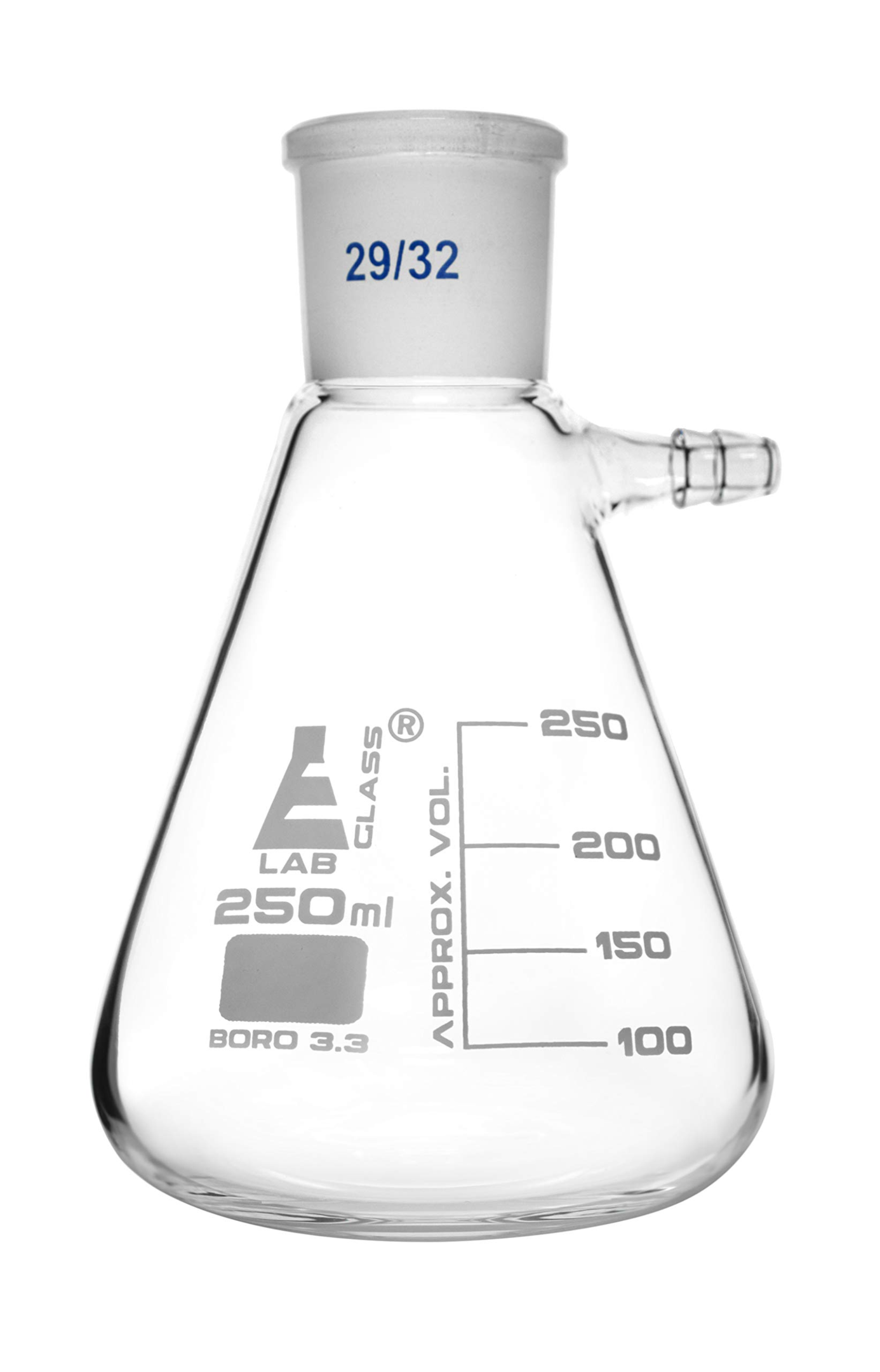
As mentioned earlier, the reusable 250 ml borosilicate glass filter flask is a popular choice for most laboratory applications. However, it’s essential to consider the capacity, stopper size, and graduations when determining the appropriate size for your laboratory requirements. The Home Science Tools filtering flask, for instance, has a capacity of 250 ml and requires a #8 stopper.
While the 250 ml option is quite popular, there are other sizes and types of filter flasks available to suit different needs. Let’s explore some of these alternatives and how they can complement or replace the traditional aspirator filter flask, in specific scenarios.
Büchner Flask and Büchner Funnel
The Büchner flask and Büchner funnel are frequently used in vacuum filtration, offering several advantages over the traditional aspirator flask. Some of these advantages include:
- The Büchner flask can filter larger volumes of solution simultaneously
- It provides increased filtration speed compared to gravity alone
- It maximizes the filter paper’s surface area
Using a Büchner flask and Büchner funnel in combination with an aspirator flask offers a more efficient filtration process, as it creates a vacuum in the flask, enabling faster filtration. These components play a vital role in an aspirator flask system, providing a more effective means of filtering solutions than the aspirator flask alone.
Erlenmeyer Flasks and Other Alternatives
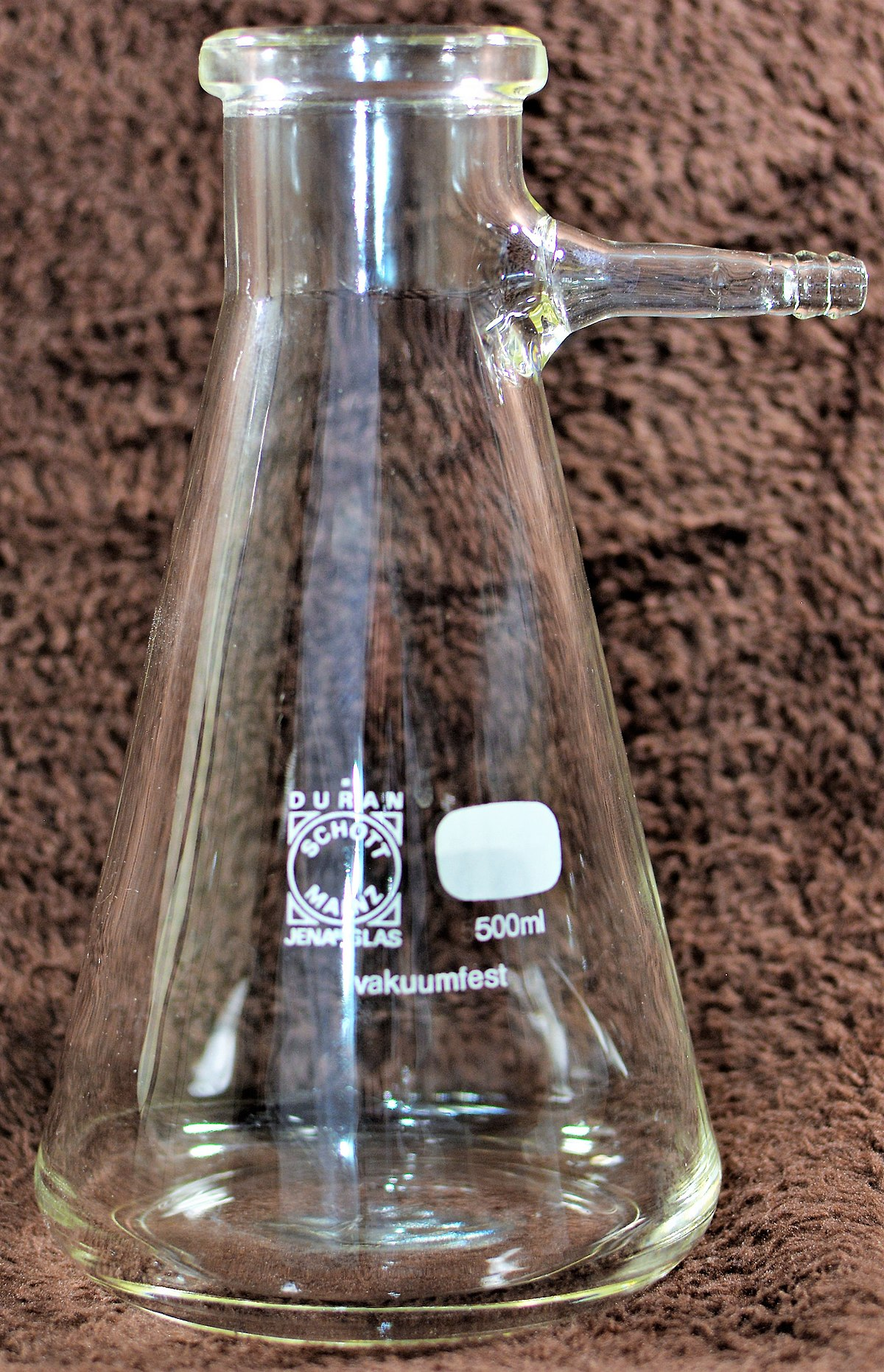
Another alternative to the traditional flask is the Erlenmeyer flask. This type of laboratory glassware is designed for:
- Mixing chemicals
- Preventing tipping
- Allowing for stoppering with rubber bungs
- Reducing evaporation
- Maximizing surface area and oxygenation
- Heating quickly due to its wider bottom
Erlenmeyer flasks offer several advantages, such as efficient mixing of chemicals, avoiding tipping, stoppering with rubber bungs, decreased evaporation, increased surface area and oxygenation, and faster heating due to the wider base.
However, Erlenmeyer flasks have some drawbacks as well. They are not as resilient as aspirator flasks, not as straightforward to use, and not as effective for vacuum filtration. Other equipment that can be used in place of aspirator filtering flasks, includes Büchner flasks, filter funnels, and filter holders.
It is essential to carefully consider which type of laboratory glassware is best suited for your specific needs and applications.
Proper Usage and Maintenance
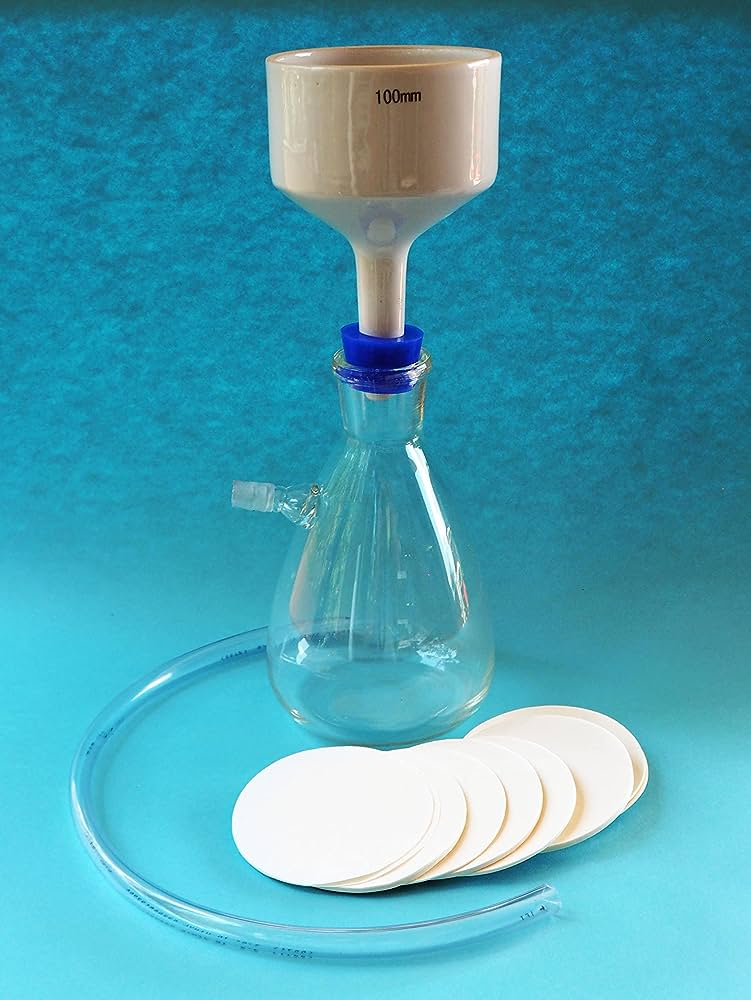
Ensuring optimal performance and longevity of your flask relies on proper usage and maintenance. For instance, connecting the flask securely to the vacuum source using a rubber stopper or vacuum adapter is essential before introducing liquid into the flat bottom of the flask.
Once the vacuum filter flask is firmly connected, a vacuum can be utilized to draw liquid through the vacuum line into the filter, ensuring efficient filtration.
After using the flask, it is recommended to clean it thoroughly to maintain its performance and prolong its life. By adhering to these best practices, you can ensure your aspirator flask remains reliable and effective for various laboratory applications.
Filter Paper and Filter Membrane Selection
The successful separation of solids from liquids or gases depends on the selection of the right filter paper or filter membrane. Filter papers come in various materials, including cellulose, glass fiber, and polyester, with pore sizes ranging from 0.2 to 10 microns, and flow rates dependent on the material and pore size. The material, pore size, flow rate, and chemical compatibility should all be considered when selecting filter papers.
Filter membranes offer several advantages compared to filter papers, including:
- Faster flow rates
- Increased chemical compatibility
- Ability to filter particles up to 0.1 microns
- More durability and can be used multiple times
Optimal filtration results and the longevity of your aspirator flask require the selection of the right filter paper or filter membrane.
Vacuum Trap and Vacuum Source
A vacuum trap is an essential component in this system, as it serves to condense vapors present in vacuum applications into either a solid or liquid state. This process helps protect vacuum pumps from contamination and ensures the integrity of vacuum systems by preventing the introduction of oil or moisture. Vacuum traps offer several advantages, such as protecting vacuum pumps from contamination, safeguarding vacuum systems against oil or moisture, and providing efficient filtration.
The vacuum source is another vital element in this flask system, as it ensures efficient filtration by providing the required vacuum pressure. Maintaining the performance and longevity of your aspirator flask system and achieving optimal filtration results can be accomplished by selecting the appropriate vacuum trap and vacuum source.
Common Applications and Industries
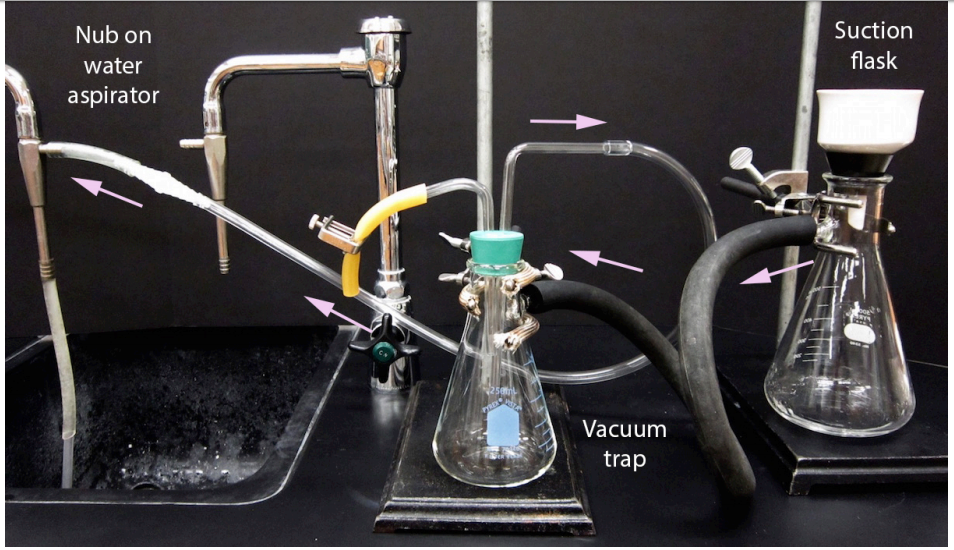
Aspirator flasks are versatile and find applications in various fields, including:
- Chemistry: for tasks like filtration, distillation, and extraction
- Biology: for cell culture, tissue culture, and cell fractionation
- Pharmaceutical research: for drug formulation, drug delivery, and drug testing
These diverse applications showcase the flexibility and adaptability of aspirator flasks, making them an indispensable tool in many scientific disciplines. Understanding the different applications and industries that utilize aspirator flasks can help you make informed decisions when selecting the right flask for your specific needs and requirements.
Solid Particle Separation
Aspirator flasks are commonly used for solid particle separation, a process that involves separating solid particles from a liquid. This technique is frequently employed in sample preparation and residue analysis. Aspirator flasks work by creating a vacuum that pulls the liquid through a filter paper or membrane, trapping the solid particles in the flask.
The ability to efficiently separate solid particles from liquids is a crucial aspect of many laboratory processes and experiments. Scientists can achieve accurate and reliable results, ensuring the success of their research and experiments, by utilizing aspirator flasks in these applications.
Aspirator Flask: Mixing and Temperature Control
Aspirator flasks also offer benefits in mixing and temperature control for various laboratory processes. Their design aids in temperature control and solution mixing due to narrow necks, thick walls, and heavy construction. Borosilicate glass resists thermal shock, ideal for lab processes like temperature control and mixing.
Whether you’re working with chemicals that require precise temperature control or need to mix solutions efficiently, aspirator flasks can provide the necessary features to ensure successful outcomes in your experiments and processes.
Summary
In conclusion, aspirator flasks are versatile and essential laboratory tools that offer numerous benefits in various scientific disciplines. From their unique borosilicate glass construction and narrow neck design to their wide range of applications in chemistry, biology, and pharmaceutical research, these flasks are indispensable in modern laboratories. By understanding their proper usage, maintenance, and the factors to consider when selecting the right aspirator flask for your needs, you can ensure the success and efficiency of your research samples and experiments.
Certified MTP has an elite selection of lab solutions, showcasing industry-leading brands including Flasks, Beakers, Pipettes, & Graduated Cylinders, Erlenmeyer Flasks, Measuring Pipettes, Stainless Steel Beakers, Glass Graduated Cylinders, and Plastic Graduated Cylinders.
Frequently Asked Questions
What is an aspiration flask?
An aspiration flask is a container used in cell culture labs to collect aspirated liquid as part of a vacuum aspiration system. It is paired with a plastic safety bottle which prevents the liquid from being drawn into the vacuum source or pump.
What are aspirator bottles used for?
Aspirator bottles are used to sediment solid or suspended particles from liquid materials by filling the container and allowing the heavier solid particles to deposit at the bottom before releasing the liquid into a collection flask. This process is often used in laboratories to separate and purify samples for further analysis. It is also used in industrial settings to separate solids from liquids in a variety of processes. The aspirator bottle is an effective and efficient way to separate solids from liquids. It is easy to
What is the use of a Büchner flask?
A Büchner Flask is a laboratory glassware used for filtering liquids, typically with the assistance of a suction pump.
Why is borosilicate glass ideal for an aspirator flask?
Borosilicate glass is an ideal material for aspirator flasks due to its superior resistance to temperature fluctuations, mechanical shock, and vibration.
How does a narrow neck design benefit the aspirator flask?
A narrow neck design in aspirator flasks provides improved control over vacuum pressure and filtration efficiency, resulting in more reliable results.
Related Blogs for Aspirator Flask, Volumetric Flasks, Beakers, Pipettes, & Graduated Cylinders:
Chemistry Glassware Names: A Comprehensive Guide
Suction Filtration: The Basics of Vacuum Filtration
All About Volumetric Flask: Uses, Function & Overview
Aspirator Flask: Benefits of Borosilicate Glass Filter Flask
Understanding Air Condenser Chemistry in 2023
What is a Graduated Cylinder Used For?
Most Accurate Glassware for Measuring Volume
Comprehensive List of Biology Laboratory Equipment in 2023
Everything You Need to Know About Beakers in Chemistry
Pipette or Measuring Cylinder: Tools for Liquid Measurements
Measuring the Volume of Liquid: Tips, Tools, and Techniques
Unlock the Secrets of Flask Volume for Accurate Results
Master C to F Formula: How to Convert Celsius to Fahrenheit
Mastering Burette Chemistry: Guide to Accurate Measurements
Erlenmeyer Flask and Filter Flasks Pros Con for Efficiency
Advantages of Aspirator Water Vacuum Pumps: Lab Efficiency
Best Graduated Cylinder for Accurate Measurements
How Erlenmeyer Flask is Used for Laboratory Applications
Flasks in Chemistry: Types and Uses for Laboratory Success
Flask Chem Essentials: Choosing the Right Lab Flask

